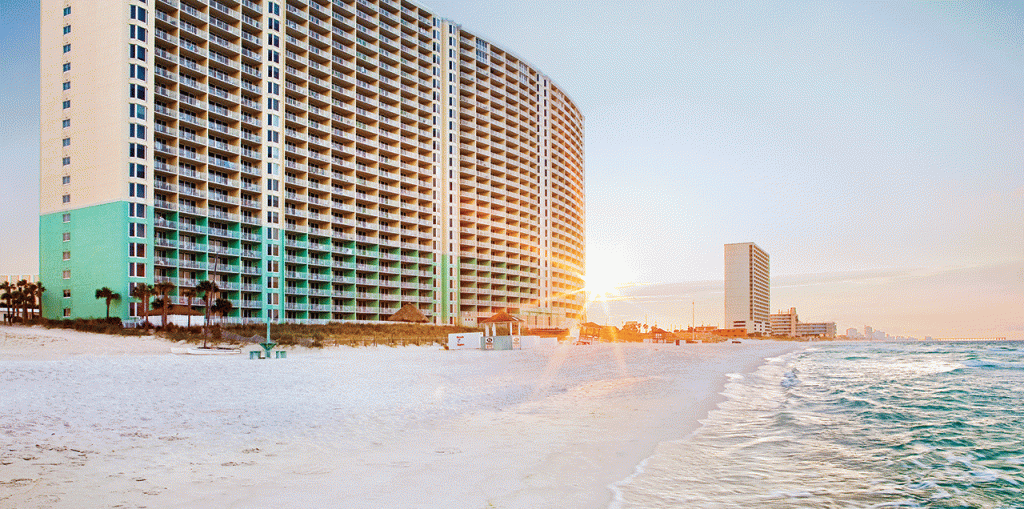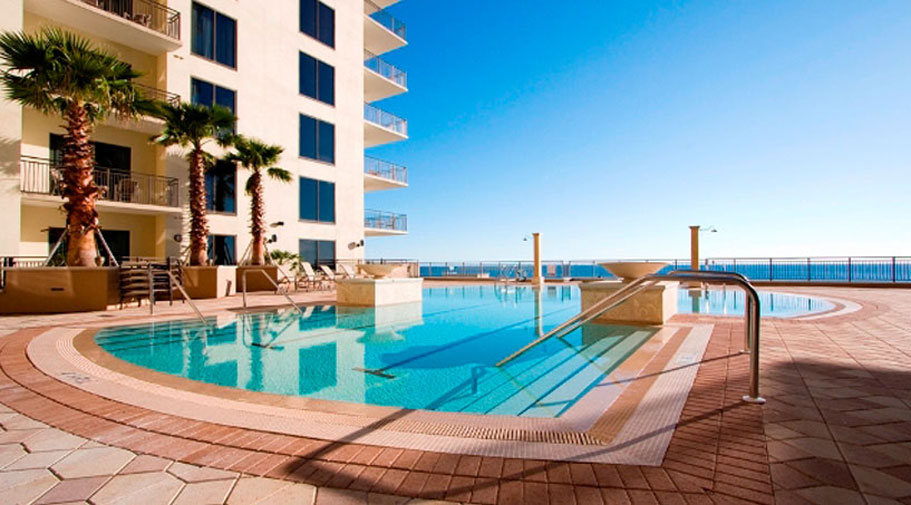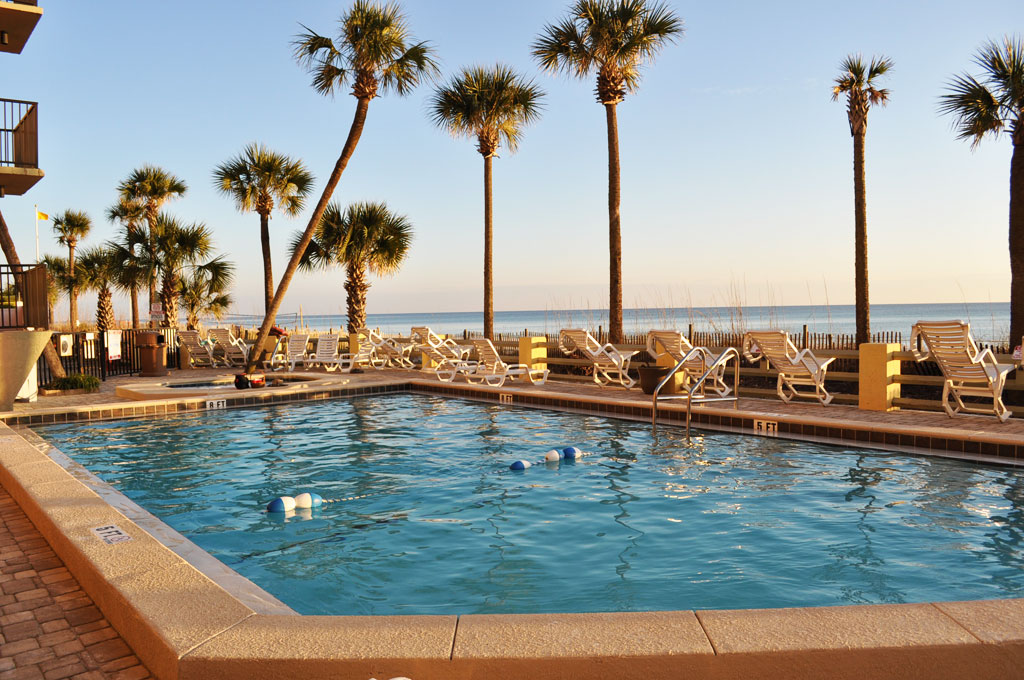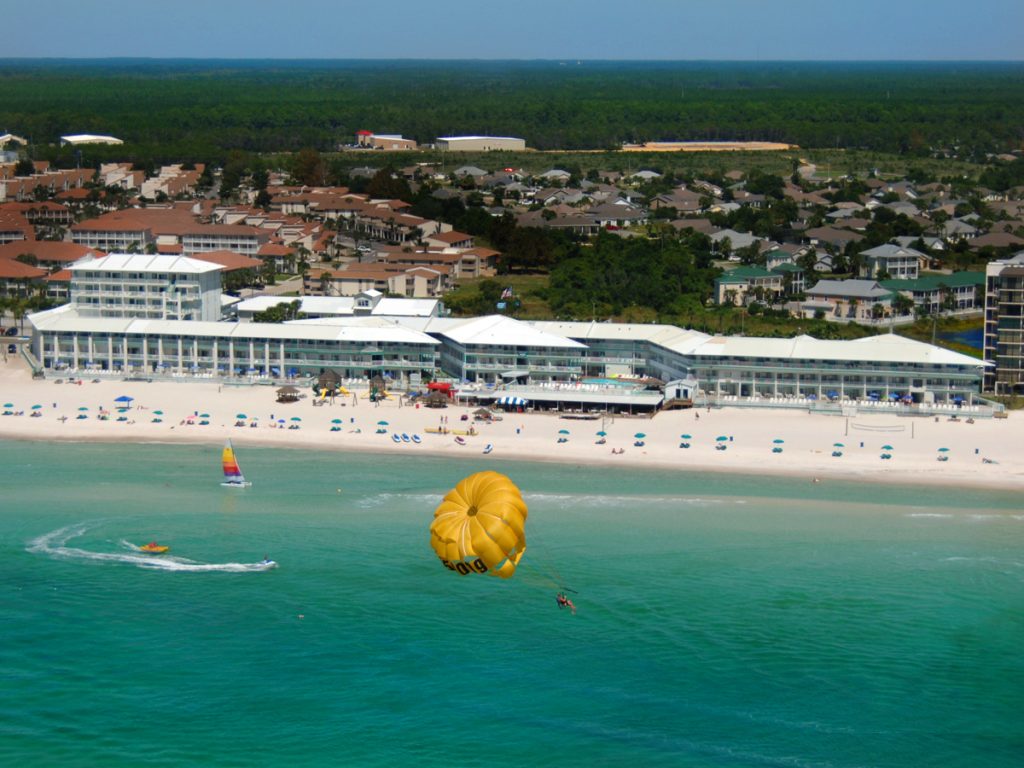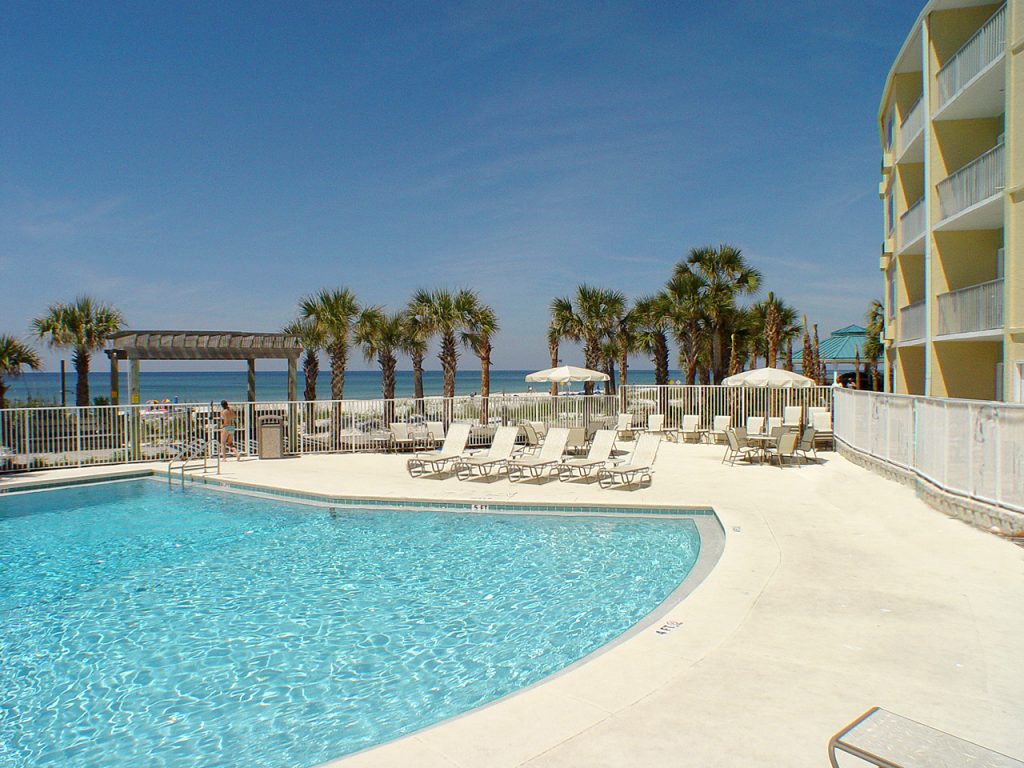Coastal neighbors along Florida’s panhandle, Panama City and Panama City Beach are totally unique to one another.
So which came first?
While the resort town of Panama City Beach may be more well-known, Panama City is the larger and more historic of the two. The port town was founded in the early 1900s as a fishing and shipping hub and named because a straight line drawn from Chicago to the Central American Panama City on a map ran directly through the town. (This was back when the buzz around the newly built Panama Canal was huge.)
Decades later, after the St. Andrews Bay Bridge was built connecting the mainland to the barrier islands, Panama City Beach was incorporated. With 27 miles of pristine white sand beaches, Panama City Beach became an instant resort town—though it maintained a quieter existence until its rep as a Spring Break hot spot spread throughout the South in the ‘90s.
Today, Panama City Beach is a globally renowned tourist destination, consistently appearing in rankings for its stellar beaches and family-friendly amenities like amusement parks and mini-golf courses. It’s also bracketed by state parks, giving visitors plenty of opportunities to swim, fish, hike, and sight-see in nature.
Ten miles across the bay, Panama City strikes the perfect balance between small-sized city and small-town fishing village. As the largest city between Pensacola and Tallahassee, the town boasts a proper downtown with an arts and theater district, entertainment hub, shopping district, and a small handful of college campuses. Four marinas and miles of coastline along the St. Andrews Bay also make the area a big draw for visitors interested in boating, fishing, and watersports. It is Panama City that also suffered the hardest blow (of the two cities) from Hurricane Michael.
While both Panama cities are distinct with their own tourist draws, they’re also both often referred to simply as Panama City. So, should you plan a trip to either, it’s smart to remember that one little word can make all the difference.
